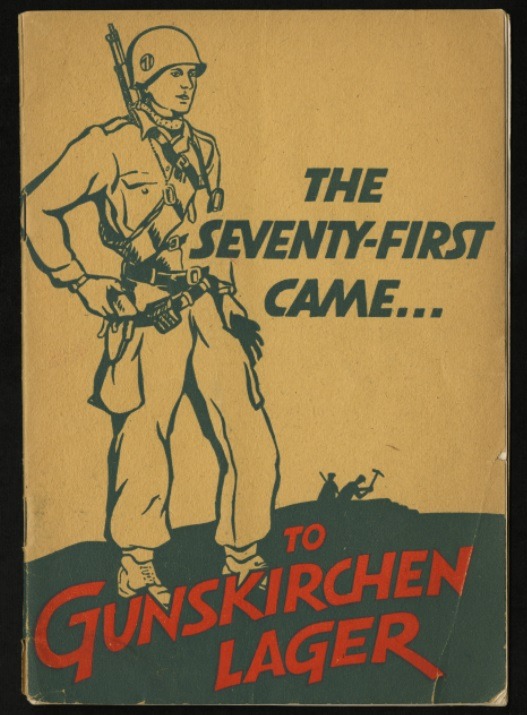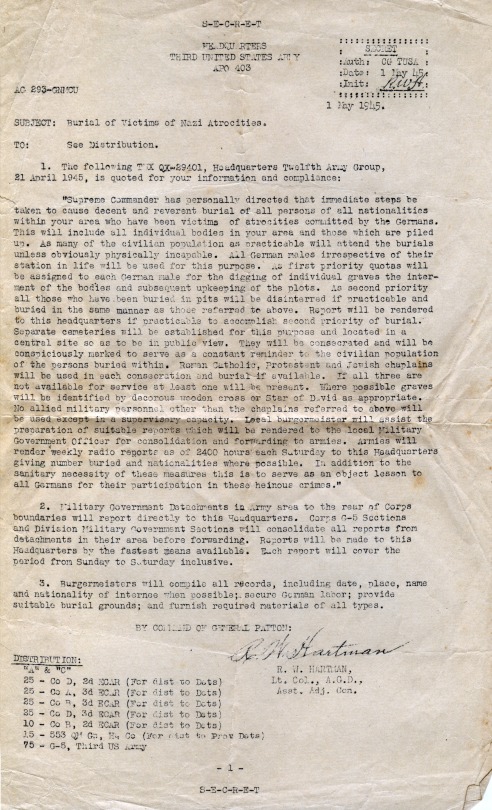by David P. Rosenberg, M.P.A., Reference Services Research Coordinator, Center for Jewish History
Recently when putting finishing touches on the After the War exhibit I was approached by someone who noticed this artifact in the exhibit:

The pamphlet is very interesting and important because not only was it was published by the division commander but it is graphically illustrated and serves as an early testimonial to the atrocities of the Holocaust. Some of the photos in the pamphlet documented prisoners burying the dead. The entire item is available here
“The 71st Came…to Gunskirchen Lager”
Published by the U.S. Army, c.1946
George Benkoe Collection, AR5533, Box 1, Folder 2
Collection of Leo Baeck InstituteOn May 4th, 1945, the American 71st Infantry Division liberated Gunskirchen Lager in upper Austria. The camp was one of the sub-camps of the infamous Mauthausen-Gusen concentration camp, and soldiers were horrified by what they found. This pamphlet, published by the commander of the division, provides a first-hand account.
We talked for a few minutes and I learned that not only did her father serve in the 71st and help liberate the camp but she had a scan of orders from General Patton concerning the burial of the dead.
She was kind enough to send me a copy electronically and grant permission for use on the blog today in honor of Veteran’s day.

Courtesy of: Cynthia Beth Rubin, Linda Rubin, and Joan Shelley Rubin
When I read the orders I could not help but be touched, the language used was straightforward and so sharp it seems impossible that it could refer to actual human beings—brothers and sisters, sons and daughters—who were massacred. It also added an even more personal dimension to the rest of the stories told in the exhibition, and reminded me that before there could be Recovery, Relief, and Return there had to be liberation and immediate urgent needs met. This task was left to the people serving the country and humanity in the armed forces.
After reading the orders and reflecting on the pamphlet I was left even more grateful of the sacrifices that men and women who served in WWII, and in all conflicts, have made. In this case, Sydney R. Rubin, who served as a medic in the 71st division, put his life on hold—he was a young attorney clerking for the US Court of Appeals, D.C. Circuit when he entered the service. Like many others his life would no longer be the same. We are grateful for his service and the service of all members of the armed forces.
You may also be interested in these blog posts:
Out of the Archives: War Heroism
In Honor of Veterans Day
Reflecting on Memorial Day
